 January 27, 2022 John E. Ross, KD8IDJ, Editor
| ||||||
Amateur Radio Digital Communications Grants Continue Amateur Radio Digital Communications (ARDC) has continued its largesse, funding a variety of projects through individual grants. Among the latest is a nearly $900,000 award that will permit the Internet Archive to build the Digital Library of Amateur Radio and Communications (DLARC), "an online, open-access resource that preserves the vital resources -- past, present, and future -- that document the history of amateur radio and communications," as the project proposal explained. Internet Archive is a nonprofit library of millions of free books, movies, pieces of software, pieces of music, websites, and more.
It will incorporate three distinct areas: a large-scale scanning program to digitize relevant print materials from institutions and individuals; a large-scale digital archiving initiative that seeks to curate, archive, and provide specialized access to such media as digital photos and audio-video presentations, as well as websites and web-published material, and a personal archiving campaign to ensure the preservation and future access of notable individuals and stakeholders involved in the founding and activities of ARDC and the broader community. The ARDC grant program stems from the proceeds of the July 2019 sale of some 4 million unused consecutive AMPRNet internet addresses. Using those funds, ARDC established a program of grants and scholarships in support of communications and networking research, with a strong emphasis on amateur radio.
Another ARDC grant for nearly $34,000 will permit the Fauquier 4-H Ham Radio Club in Virginia to purchase and equip a 4-H Youth Station and Outreach Trailer for the club's youth to use at regular meetings, public demonstrations, and special events. "A big thanks to Amateur Radio Digital Communications for awarding our new Ham Radio Club a grant to build a ham radio trailer," the club posted on its Facebook page. "Building out the trailer and using the modern amateur radio equipment will be a fun STEAM [science, technology, engineering, arts, and mathematics] project for our club members. Once it is all built out, you can plan to see the trailer out at some local events -- hopefully the Fauquier County Fair and the Manassas HamFest in mid-June." The Fauquier 4-H Ham Radio Club offers local youth ages 9 to 18 opportunities to explore STEAM through amateur radio communications and electronics projects. "An amateur radio license is not required to join, but the club strives to inspire and help members who are interested in getting their license achieve that goal," the proposal said.
ARRL Podcasts Schedule
The latest edition of the Eclectic Tech podcast (Episode 52) features a chat with Sal DeFrancesco, K1RGO, about his 630-meter receiving The On the Air and Eclectic Tech podcasts are sponsored by Icom. Both podcasts are available on iTunes (iOS) and Stitcher (Android) as well as on Blubrry -- On the Air | Eclectic Tech. Weak Signals Heard from Spanish Satellites EASAT-2 and HADES AMSAT-EA (Spain) has said it appears that EASAT-2 and HADES are transmitting, and that weak signals have been heard, but apparently the satellites' antennas have not deployed. "We confirm the reception of both EASAT-2 and HADES, as well as the decoding of telemetry and the FM recorded voice beacon with the call sign AM5SAT of the first one. EASAT-2 appears to be working well, At the request of AMSAT-EA, EASAT-2 has been designated as Spain-OSCAR 114 (SO-114) and HADES as Spain-OSCAR 115 (SO-115). "These signals that confirm the operation of both satellites were received by Daniel Estévez, EA4GPZ, at 1807 UTC on Saturday, January 15, using two antennas from the Allen Telescope Array." Doppler observations from the co-launched Delfi-PQ satellite and the amateur radio community have been used to identify the satellites' orbits or TLEs. AMSAT-EA reports that Estévez performed a preliminary analysis using just one polarization of one of the Allen Telescope Array satellite dishes. EASAT-2 was detected with a relatively strong signal, close to the Delfi-PQ signal, obtaining voice FM beacon transmissions and FSK, FSK-CW at 50 baud, AMSAT-EA said. "The CW beacon clearly shows the message VVV AM5SAT SOL Y PLAYA, which is one of several that both satellites emit, although the call sign AM5SAT confirms that it is EASAT-2," AMSAT-EA said. "In the recording made by EA4GPZ, there is also a faint trace confirmed to be from HADES and stronger packets probably from the IRIS-A satellite."
AMSAT-EA reports that signals from HADES are weaker than those of EASAT-2, "most likely because the onboard computer has not yet managed to deploy the antennas either, although it will continue trying regularly," AMSAT-EA said. "The reason the signals are suspected to be weaker at HADES is that the antennas are more tightly folded than those of EASAT-2. In any case, this is great news, since the transmission pattern confirms the proper functioning of the satellite. In the observations, you can see the FSK tones with a deviation of about 5 kHz interspersed with the FM carrier corresponding to the voice beacon of the satellite, which has call sign AM6SAT. The AMSAT-EA team is working to try to decode the telemetry signals and obtain more detailed information on the state of the satellite." AMSAT is asking amateurs with "very high-gain antennas" to try to receive them -- especially HADES. "If we could decode telemetry, it would be very helpful for us." AMSAT-EA said. "Until antennas are deployed, it will be very difficult to use their repeaters or to receive any SSTV camera images from HADES, but we hope that this will happen sooner or later, at least because, even if the computer doesn't succeed applying heat to the resistor where the thread [retaining the antennas] is attached, with time, the thread should break due to the space environment conditions." Puerto Rico Section and Red Cross Puerto Rico Chapter Sign New MOU The ARRL Puerto Rico Section and the American Red Cross Puerto Rico Chapter signed a new memorandum of understanding (MOU) on January 13. The MOU calls on the ARRL Puerto Rico Section to offer any assistance and emergency communication support to the American Red Cross, should their communications systems fail or become disrupted. American Red Cross Regional Executive Lee Vanessa Feliciano; Puerto Rico Section Manager Rene Fonseca, NP3O, and Section Emergency Coordinator William Planas-Montes, NP3WP, signed for their respective organizations.
Hurricanes Irma and Maria in 2017 prompted renewal of the MOU. Following Hurricane Maria, the American Red Cross asked ARRL to provide amateur radio volunteers to assist on site for about 6 weeks. Among other provisions, the MOU calls on both organizations to encourage their units to engage in discussions with their field units to develop plans for local response or disaster relief operations. It also calls on each party to participate in community preparedness, as well as in ARRL Field Day, the ARRL Simulated Emergency Test (SET), and other emergency exercises. Also present for the signing, were Logistics Specialist Nory Bonilla and Regional Disaster Officer Joseph Guzmán from the Puerto Rico Red Cross. Puerto Rico Assistant Section Emergency Coordinator James Perez, KP4WA, and Section Traffic Manager Emmanuel Cruz, NP4D, represented ARRL. Perez arranged the signing ceremony. The MOU is for a 3-year term and is renewable. An initial MOU was signed in 2017, and a second one was signed in 2019. Since then, the amateur radio population has grown to more than 4,900, indicating an interest in maintaining communication in emergencies and disasters. -- Thanks to Angel Santana, WP3GW Announcements
Amateur Radio in the News ARRL Public Information Officers, Coordinators, and many other member-volunteers help keep amateur radio and ARRL in the news.
Share any amateur radio media hits you spot with us. Next QSO Today Virtual Ham Expo set for Mid-March What's become a regular March event, the next QSO Today Virtual Ham Expo will be held live from March 12-13, and then on demand for 30 days afterward. More than 60 speakers will deliver presentations on their subject areas. "There's content for everyone whether a newly licensed ham looking for next steps to using that license or a 30+ year experienced ham looking for new projects," the QSO Today Virtual Ham Expo organizers promise. Presentations will include "Core HF Communication Concepts: Fundamentals of Shortwave Propagation;" "Deep Dive of an FPGA Virtual visitors may watch as many presentations as they want and return any time within 30 days to view speakers and presentations they may have miss as well as explore exhibitor offerings. This Virtual Ham Expo will debut new technology that, organizers say, will "further improve the live video interaction experience with exhibitors and fellow operators." ARRL The national association for Amateur Radio®, is a QSO Today Virtual Ham Expo Partner. Early bird tickets go on sale on February 1. Tickets are $10 through March 6. ARRL Learning Network Webinars
More webinars are coming soon! ARRL members may register for upcoming presentations and view previously recorded Learning Network webinars. ARRL-affiliated radio clubs may also use the recordings as presentations for club meetings, mentoring new and current hams, and discussing amateur radio topics. The ARRL Learning Network schedule is subject to change. QRP Operator Logs One Contact per Day for Nearly 30 Years From August 5, 1994, through December 20, 2021 -- a span of nearly 10,000 days -- ARRL member John Shannon, K3WWP, of Kittanning, Pennsylvania, made at least one CW contact while running 5 W or less to simple wire antennas. That includes one that's in his attic. Over the course of said 10,000 days, Shannon made 72,190 contacts with 20,098 unique stations. For at least 2,099 of his contacts, his signal traveled 1,000 or more miles per W, while another 24,098 were DX (non-W/VE) contacts made in 224 DXCC entities. He contacted all Shannon reports that the DX country he contacted most often was Germany, with 1,934 contacts. By continent, his contact totals ranged from 52,639 with stations in North America to 325 with stations in Oceania, plus 18 with stations in Antarctica. The number of contacts he made on each band used includes 19,279 on 40 meters; 15,459 on 20 meters; 28 on 60 meters, and 39 on 6 meters. Within his first UTC hour of operation each day, Shannon logged nearly 73% of his daily contacts. He also experienced a DX streak from March 1, 2013 through August 1, 2018, which was a total of 1,980 days. During this time, he contacted at least one DX station per day. Shannon said that the greatest satisfaction he's derived from his operating streak is that other hams express that he inspired their interest in, and enjoyment of, CW and/or QRP operating. Shannon said that his greatest satisfaction derived from his lengthy operating streak was having other hams express that he inspired their interest in operating CW and/or QRP, and that they really enjoyed it. In the early 2000s, he wrote for the "QRP with John Shannon, K3WWP" column in The Key Note, the FISTS CW Club's newsletter. Additionally, his article, "The Streak: 23 Years of Daily Contacts," was published in the August 2017 issue of QST. Shannon said his streak is not over. He intends to continue making daily contacts for 11,000 or 12,000 days. View his website for more information. Getting It Right! Regarding the story "Two Radio Amateurs Appointed to the FCC Technological Advisory Council (TAC)" in the January 20 edition of The ARRL Letter: Andy Clegg, W4JE, was also appointed to the TAC to represent the Wireless Innovation Forum. Dale Hatfield, ex-W0IFO, was another TAC appointee. In Brief...
The K7RA Solar Update Tad Cook, K7RA, Seattle, reports: A new sunspot group appeared on January 20, another on January 24, two more on January 25, and one more on January 26. But, overall solar activity declined from the previous week, January 13 - 19. Average daily sunspot number declined from 94.4 to 39.6, and average daily solar flux went from 112 to 97.6. Predicted solar flux is 105 on January 27 - February 4; 108 on February 5 - 6; 110 on February 7 - 8; 108 on February 9 - 10; 106, Predicted planetary A index is 8, 5, 12, and 10 on January 27 - 30; 5 on January 31 - February 3; 15 and 10 on February 4 - 5; 5 on February 6 - 9; then 12, 15, and 12 on February 10 - 12; 5 on February 13 - 19; 6 on February 20 - 23; 5, 12, and 10 on February 24 - 26; 5 on February 27 - March 2, and 15 and 10 on March 3 - 4. Look for reports on 6-meter openings in Friday's bulletin. Sunspot numbers for January 20 - 26 were 60, 23, 22, 22, 26, 53, and 71, with a mean of 39.6. The 10.7-centimeter flux was 99.3, 97.3, 95.2, 93.5, 95.2, 100.9, and 101.8, with a mean of 97.6. Estimated planetary A indices were 5, 8, 10, 8, 4, 13, and 10, with a mean of 8.3. Middle latitude A index was 5, 5, 7, 7, 3, 10, and 8, with a mean of 6.4. A comprehensive K7RA Solar Update is posted Fridays on the ARRL website. For more information concerning radio propagation, visit the ARRL Technical Information Service, read "What the Numbers Mean...," and check out the Propagation Page of Carl Luetzelschwab, K9LA A propagation bulletin archive is available. For customizable propagation charts, visit the VOACAP Online for Ham Radio website. Share your reports and observations. Just Ahead in Radiosport
Upcoming Section, State, and Division Conventions
Search the ARRL Hamfest and Convention Database to find events in your area. ARRL -- Your One-Stop Resource for
Subscribe to...
Free of charge to ARRL members...
| ||||||
 "The DLARC will be both an education program building a unique and unparalleled collection of primary and secondary resources, but also an innovative technical project that will build a digital library that combines both digitized print materials and [original] digital content," Internet Archive said in its proposal.
"The DLARC will be both an education program building a unique and unparalleled collection of primary and secondary resources, but also an innovative technical project that will build a digital library that combines both digitized print materials and [original] digital content," Internet Archive said in its proposal.
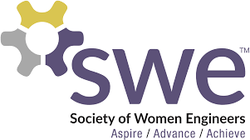 A $318,000 grant to the Society of Women Engineers (
A $318,000 grant to the Society of Women Engineers (.jpg) The latest episode of the On the Air podcast (Episode 25) features a conversation with Michael Fluegemann, KE8AQW, about how to get started with CW.
The latest episode of the On the Air podcast (Episode 25) features a conversation with Michael Fluegemann, KE8AQW, about how to get started with CW..jpg) loop antenna design that appears in the February issue of QST. Also, there is a brief discussion of the new YubiKey Bio password protection device
loop antenna design that appears in the February issue of QST. Also, there is a brief discussion of the new YubiKey Bio password protection device.jpg) except for the deployment of the antennas -- something that apparently has not yet occurred and causes weak signals," said AMSAT-EA Mission Manager Felix Paez, EA4GQS. "However, the AMSAT-EA team confirms that, based on the reception of FSK, CW, the FM voice beacon, and the telemetry data that has been decoded, it can be said that the satellite is working perfectly. In the event of low battery or system malfunction, the onboard computer would not transmit CW messages or the voice beacon call sign, as it would be in [safe mode] with only fast and slow telemetry transmissions."
except for the deployment of the antennas -- something that apparently has not yet occurred and causes weak signals," said AMSAT-EA Mission Manager Felix Paez, EA4GQS. "However, the AMSAT-EA team confirms that, based on the reception of FSK, CW, the FM voice beacon, and the telemetry data that has been decoded, it can be said that the satellite is working perfectly. In the event of low battery or system malfunction, the onboard computer would not transmit CW messages or the voice beacon call sign, as it would be in [safe mode] with only fast and slow telemetry transmissions.".JPG)
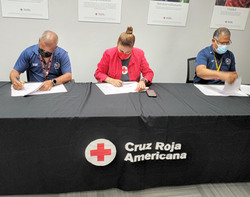
(1).jpg) Winter Field Day (
Winter Field Day (-slate.JPG) The non-competitive
The non-competitive .jpg) DVB-S2 Implementation;" "Fun With the NanoVNA," and "Helically Wound Vertical for 160 Meters. The complete list of presentations is available from the
DVB-S2 Implementation;" "Fun With the NanoVNA," and "Helically Wound Vertical for 160 Meters. The complete list of presentations is available from the 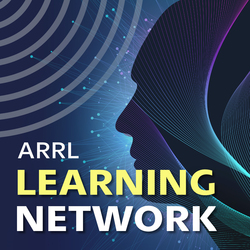 Visit the
Visit the 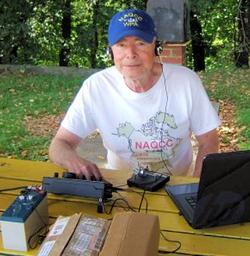 50 states "many times over" -- he made 3,819 contacts with stations in Pennsylvania and 63 contacts with stations in Wyoming.
50 states "many times over" -- he made 3,819 contacts with stations in Pennsylvania and 63 contacts with stations in Wyoming.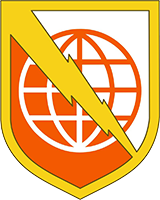 A February webinar will discuss amateur radio and AUXCOM support to the US Department of Defense. On Thursday, February 18, at 0100 (the evening of February 17 in North American time zones), the US Army Network Enterprise Technology Command (NETCOM) will host a Zoom call to discuss amateur radio and AUXCOM support to the US Department of Defense. During this presentation, the NETCOM representative will discuss the authorities for these operations; upcoming DOD exercise opportunities for 2022 where outreach to the amateur radio/AUXCOM community will be a primary training objective; use of the five 60-meter channels, and the concept for the types of amateur/AUXCOM outreach. There will be an opportunity for Q&A throughout the presentation. Use
A February webinar will discuss amateur radio and AUXCOM support to the US Department of Defense. On Thursday, February 18, at 0100 (the evening of February 17 in North American time zones), the US Army Network Enterprise Technology Command (NETCOM) will host a Zoom call to discuss amateur radio and AUXCOM support to the US Department of Defense. During this presentation, the NETCOM representative will discuss the authorities for these operations; upcoming DOD exercise opportunities for 2022 where outreach to the amateur radio/AUXCOM community will be a primary training objective; use of the five 60-meter channels, and the concept for the types of amateur/AUXCOM outreach. There will be an opportunity for Q&A throughout the presentation. Use .jpg) The Amateur Radio Emergency Service® (ARES®) team of Centralia, Washington, activated following an early morning bombing on December 19. Authorities say two men planted the bomb, which blew up the ATM at a local bank. The Washington State Patrol Bomb Squad and the FBI responded to assist the Centralia Police Department (CPD) in the investigation. The Centralia ARES team staged its communications van next to the scene. The 13 ARES team members who responded to a call for assistance were paired with CPD detectives to assist in the evidence search at the crime scene. ARES team members had been trained to perform evidence searches for the police department and were able to put those skills to work. Teams of three to five ARES members, led by a detective, gloved up and slowly searched an estimated 10,000 square feet around the bank, along nearby railroad tracks, and an adjoining field, retrieving as many potential pieces of evidence as they could find. The ARES team was released after about 1 hour. -- Thanks to
The Amateur Radio Emergency Service® (ARES®) team of Centralia, Washington, activated following an early morning bombing on December 19. Authorities say two men planted the bomb, which blew up the ATM at a local bank. The Washington State Patrol Bomb Squad and the FBI responded to assist the Centralia Police Department (CPD) in the investigation. The Centralia ARES team staged its communications van next to the scene. The 13 ARES team members who responded to a call for assistance were paired with CPD detectives to assist in the evidence search at the crime scene. ARES team members had been trained to perform evidence searches for the police department and were able to put those skills to work. Teams of three to five ARES members, led by a detective, gloved up and slowly searched an estimated 10,000 square feet around the bank, along nearby railroad tracks, and an adjoining field, retrieving as many potential pieces of evidence as they could find. The ARES team was released after about 1 hour. -- Thanks to 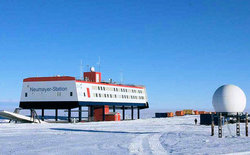 After an August storm damaged the satellite antenna that
After an August storm damaged the satellite antenna that 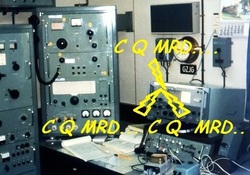 The CW-only
The CW-only 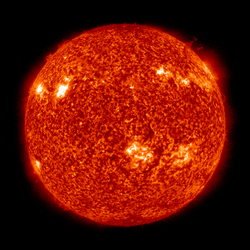 105, 103, 101, 100, and 95 February 11 - 16; 92 on February 17 - 18; 90 on February 19 - 21; 88, 87, 92, and 94 on February 22 - 25; 96 on February 26 - 28; 98 and 100 on March 1 - 2, and 105 on March 3 - 4.
105, 103, 101, 100, and 95 February 11 - 16; 92 on February 17 - 18; 90 on February 19 - 21; 88, 87, 92, and 94 on February 22 - 25; 96 on February 26 - 28; 98 and 100 on March 1 - 2, and 105 on March 3 - 4.







